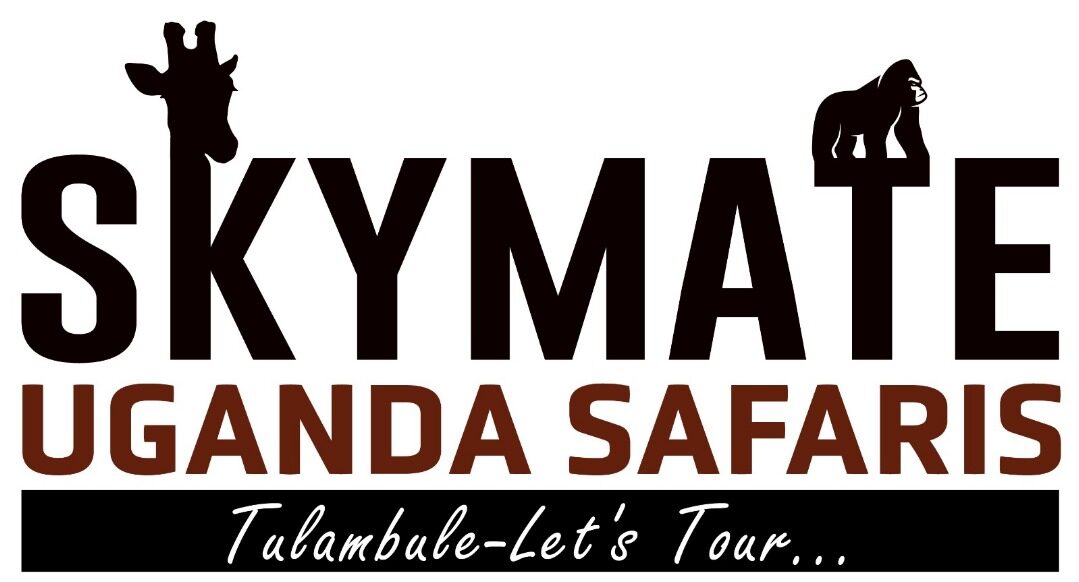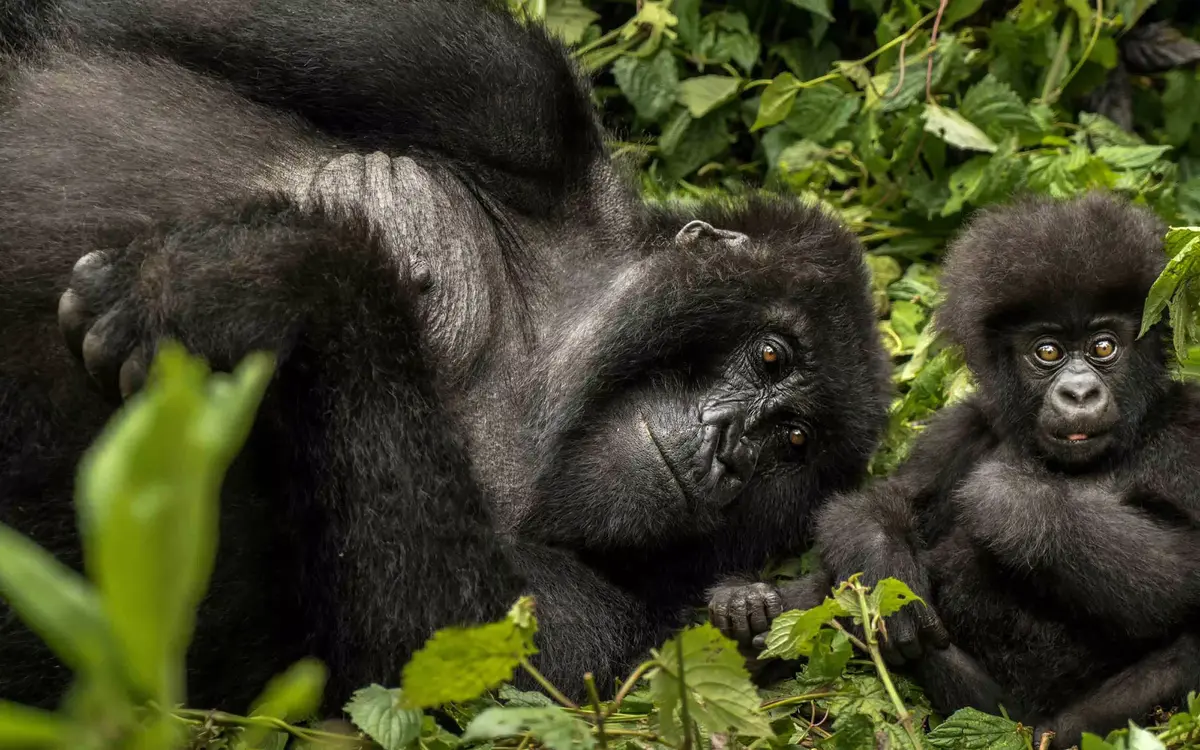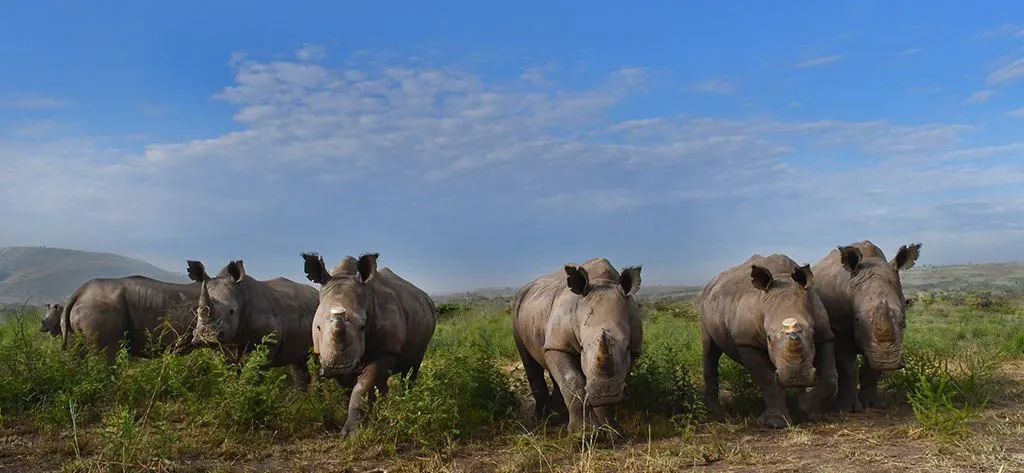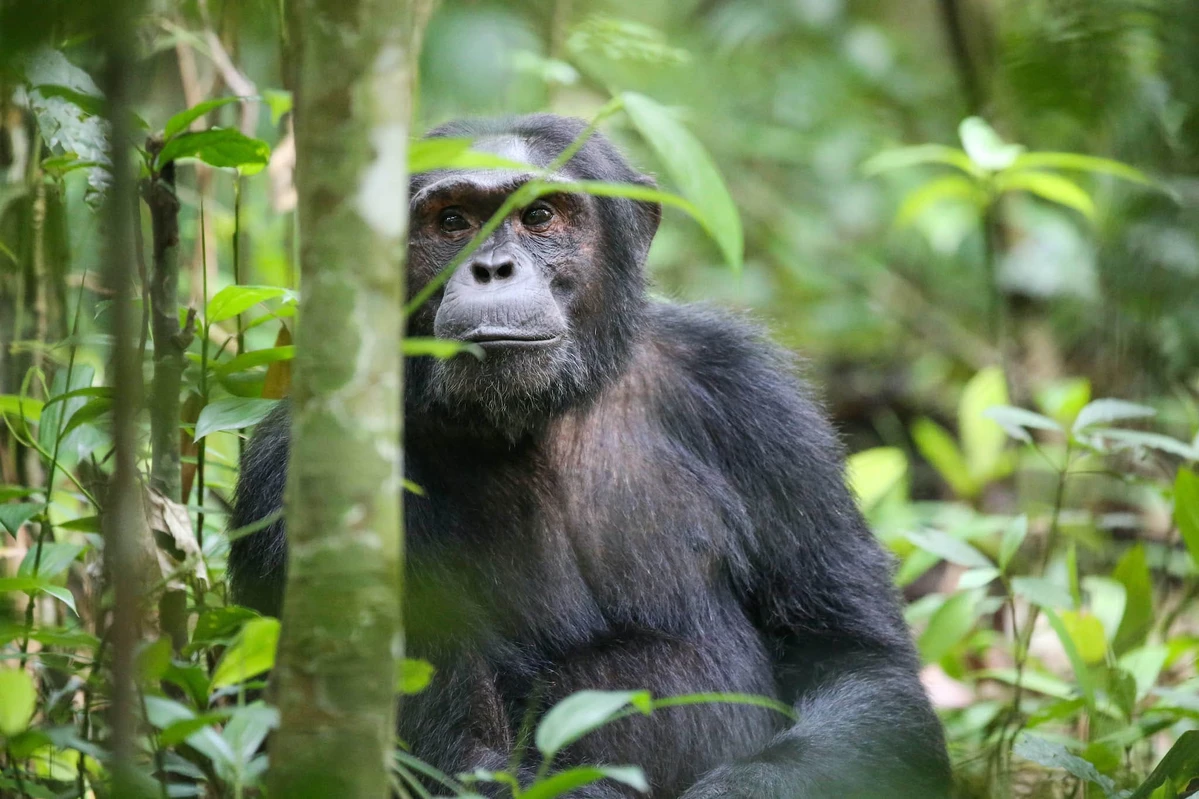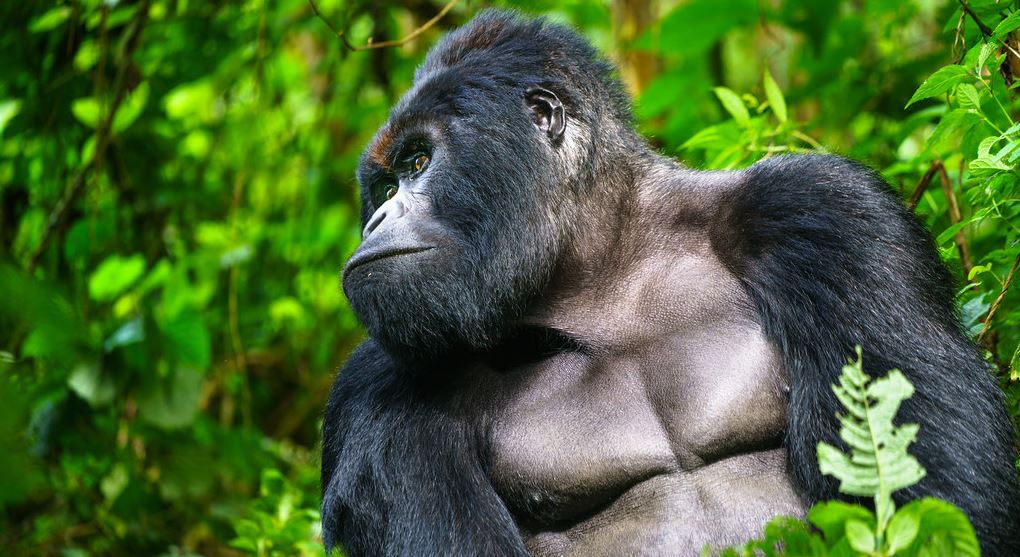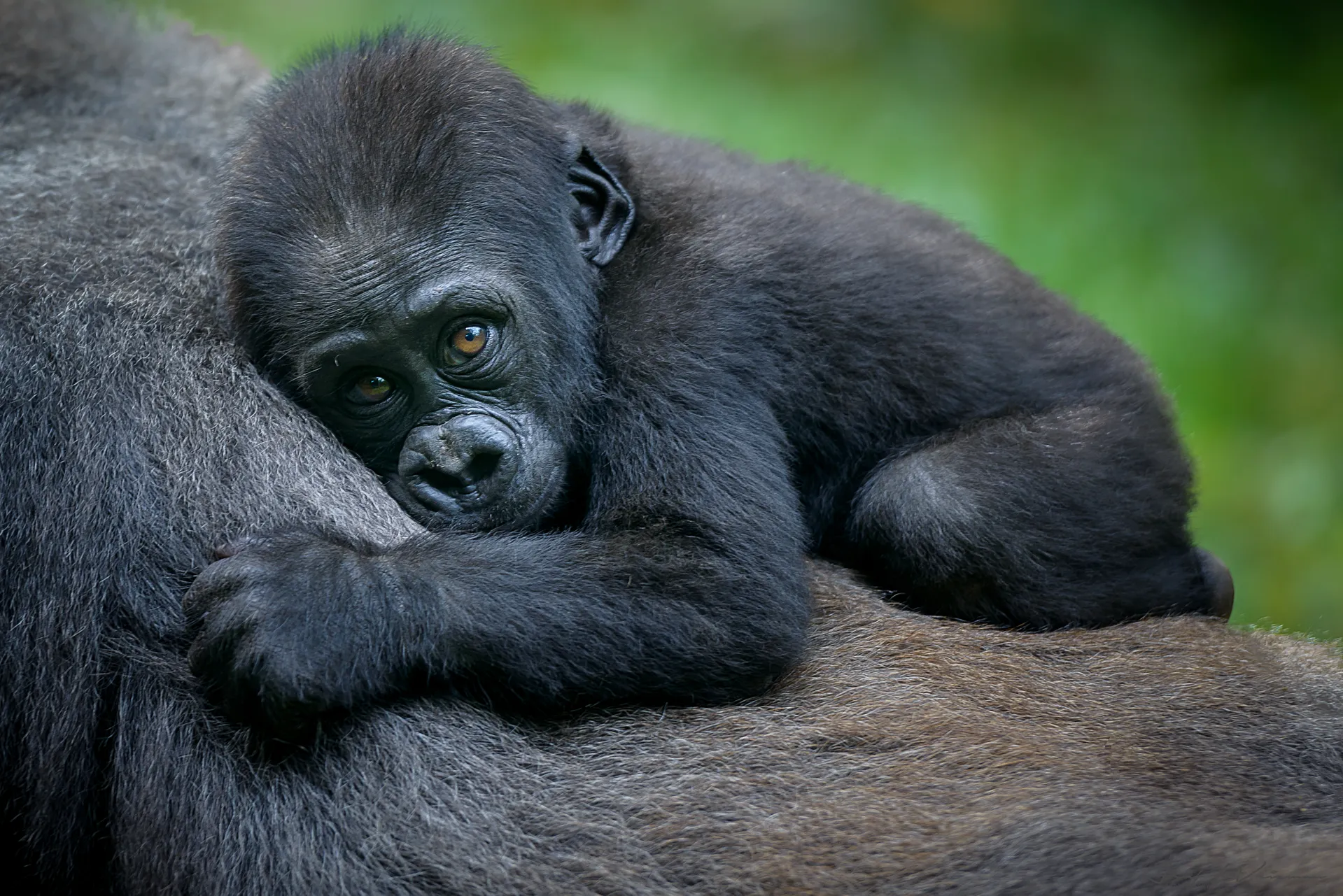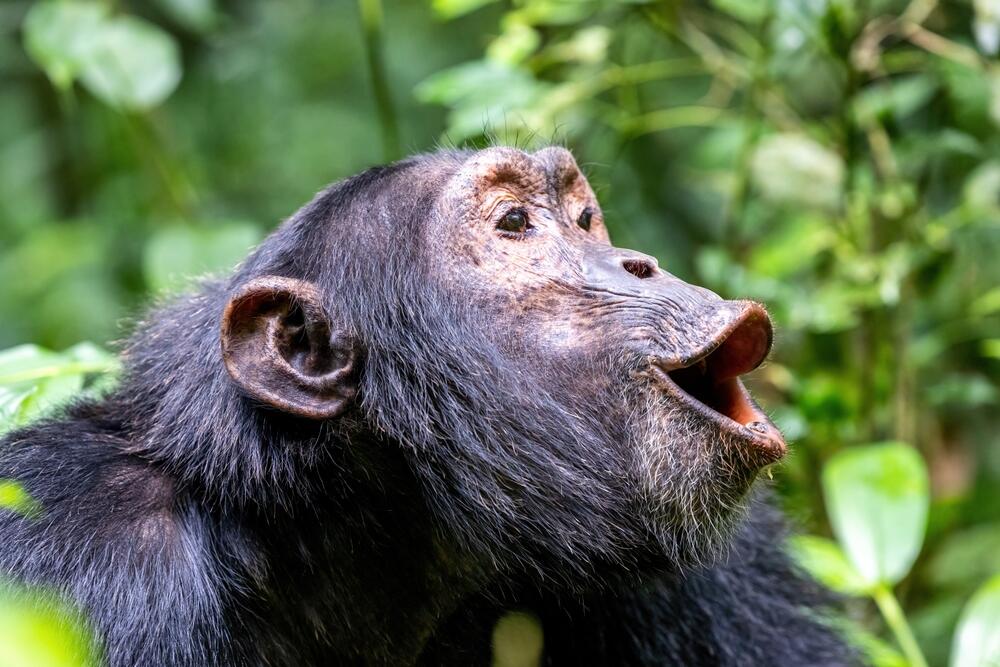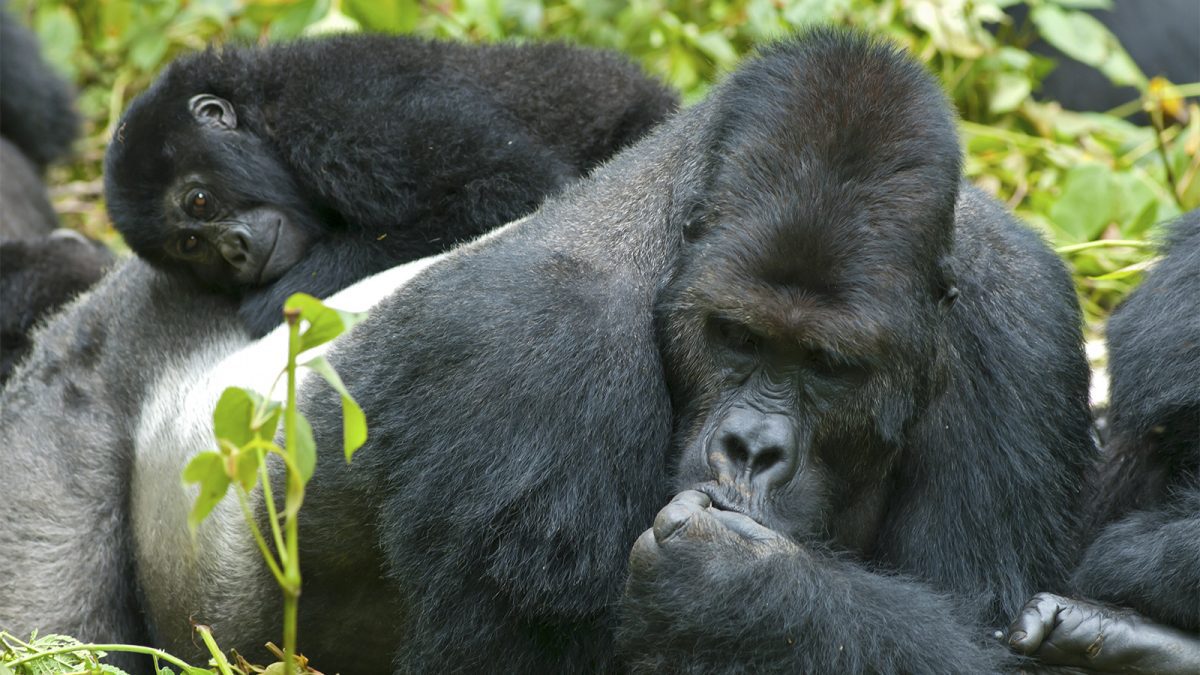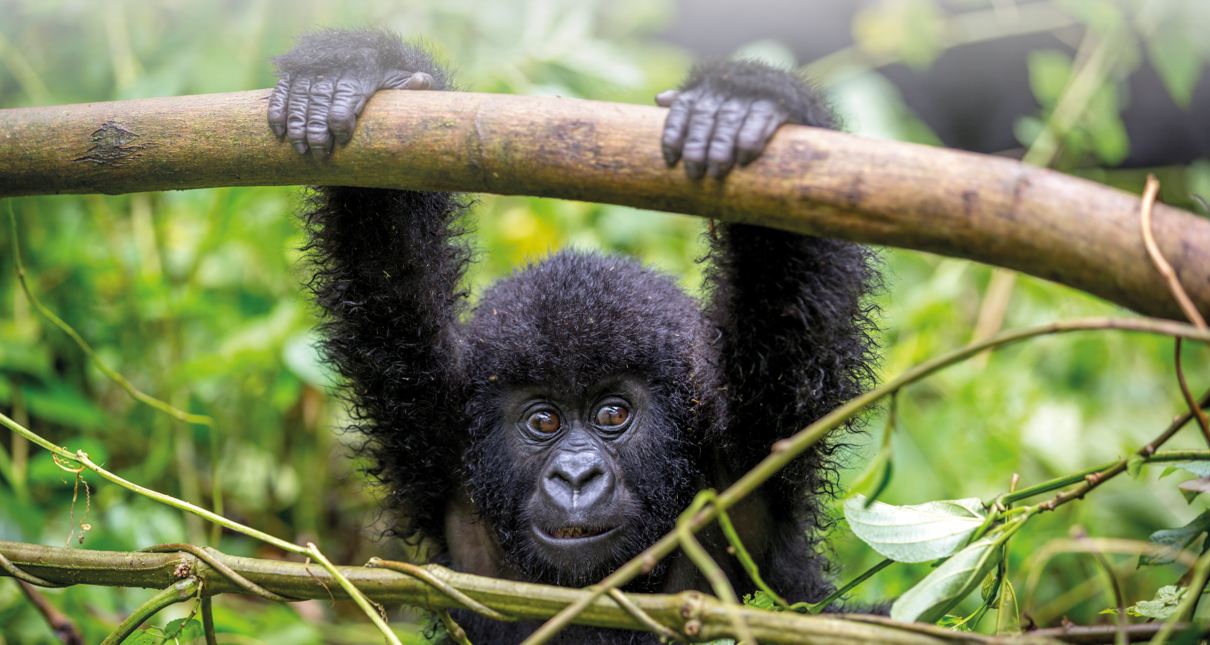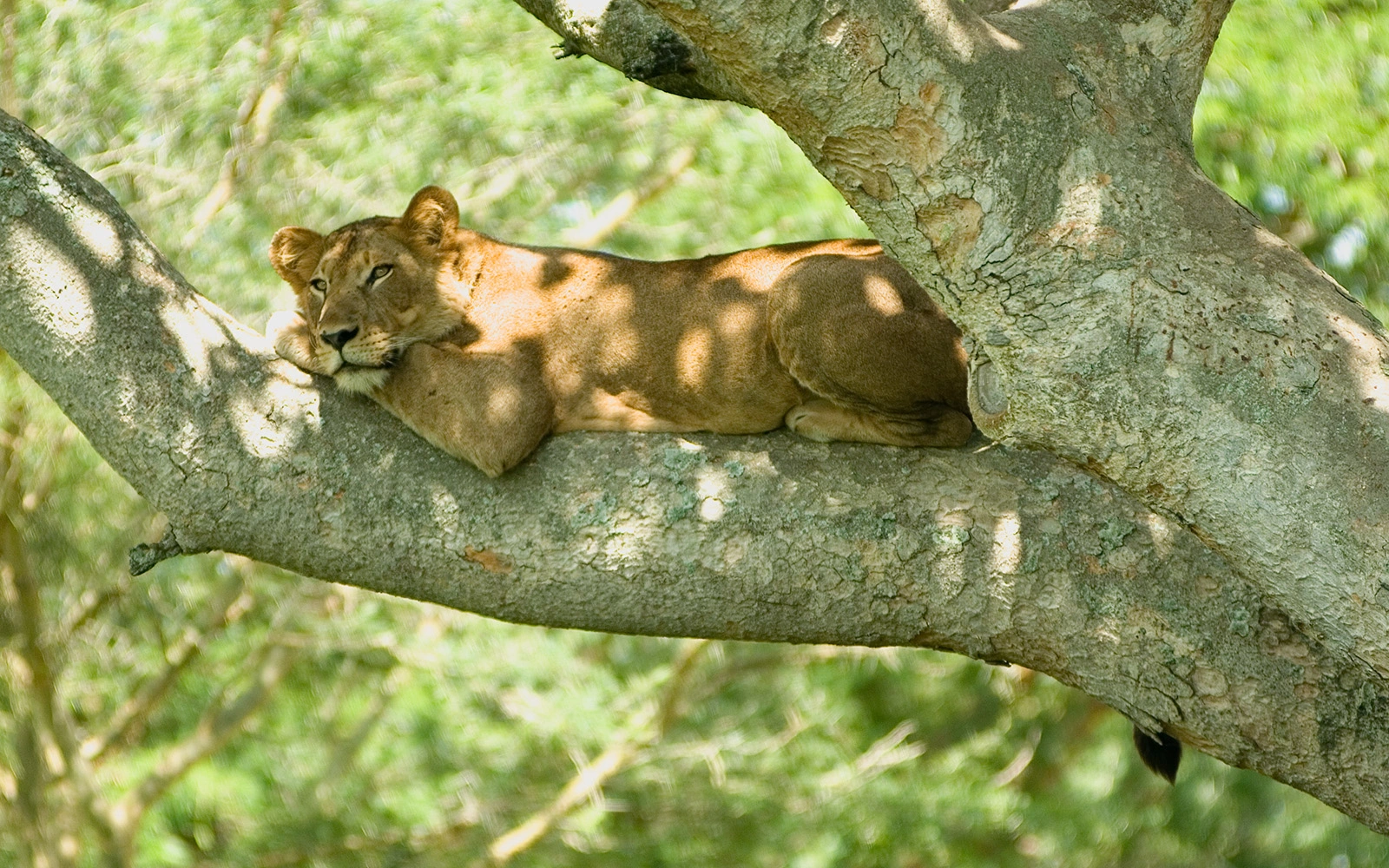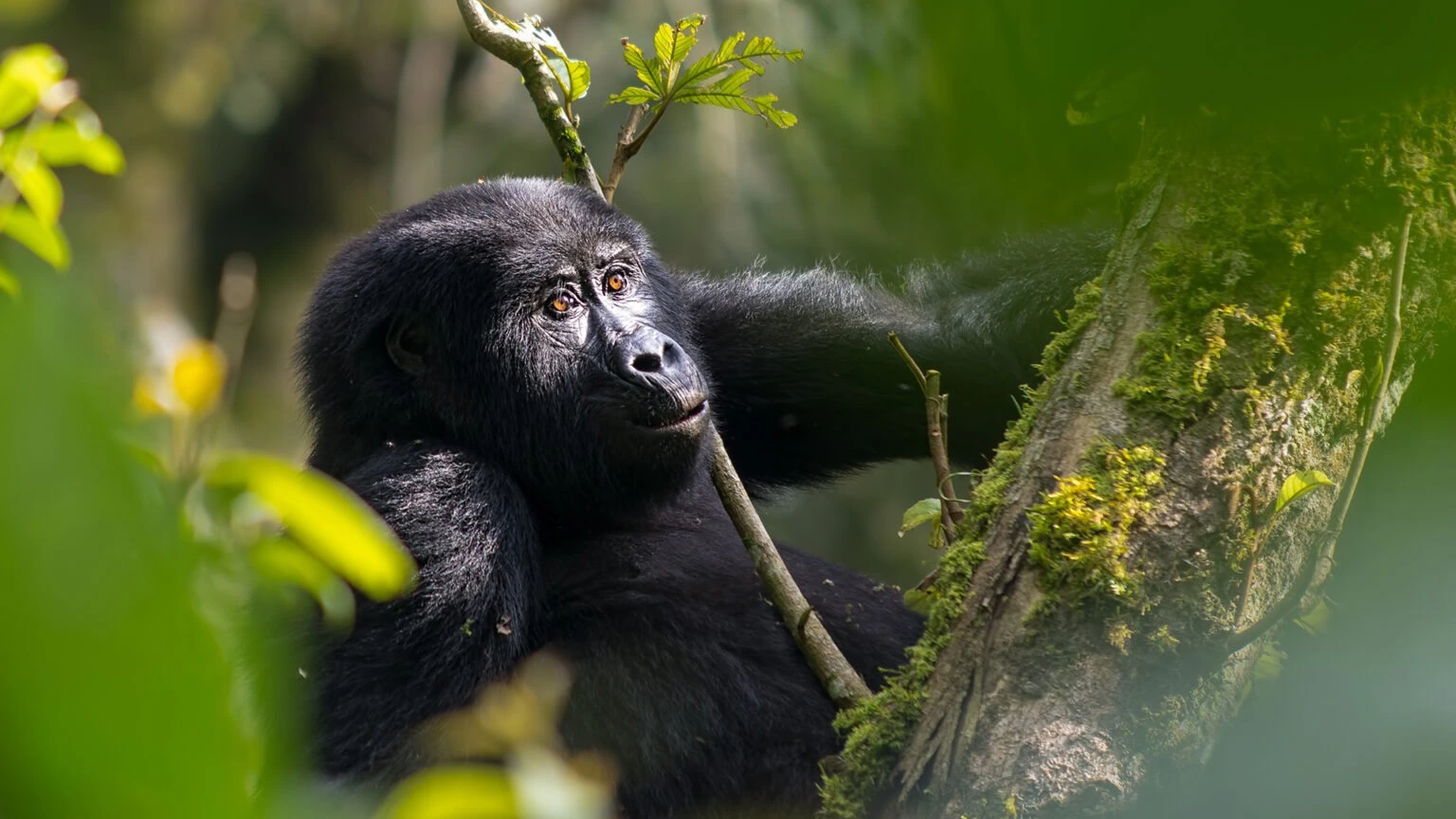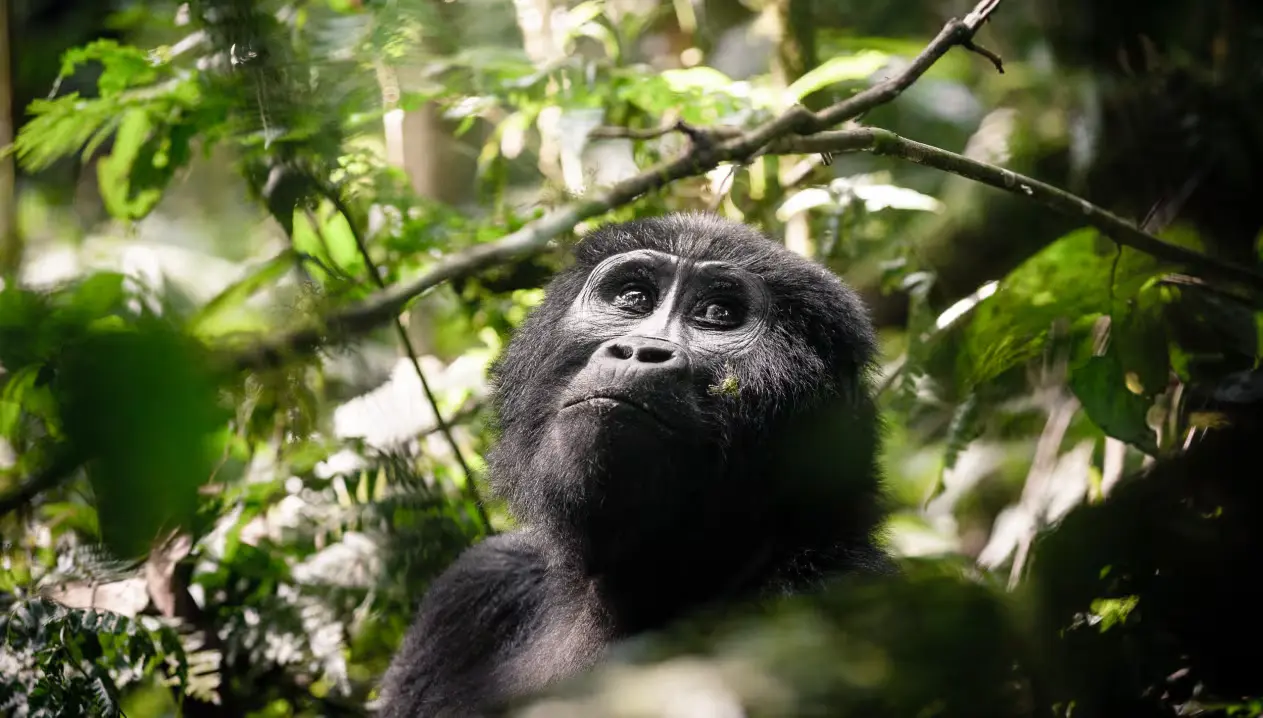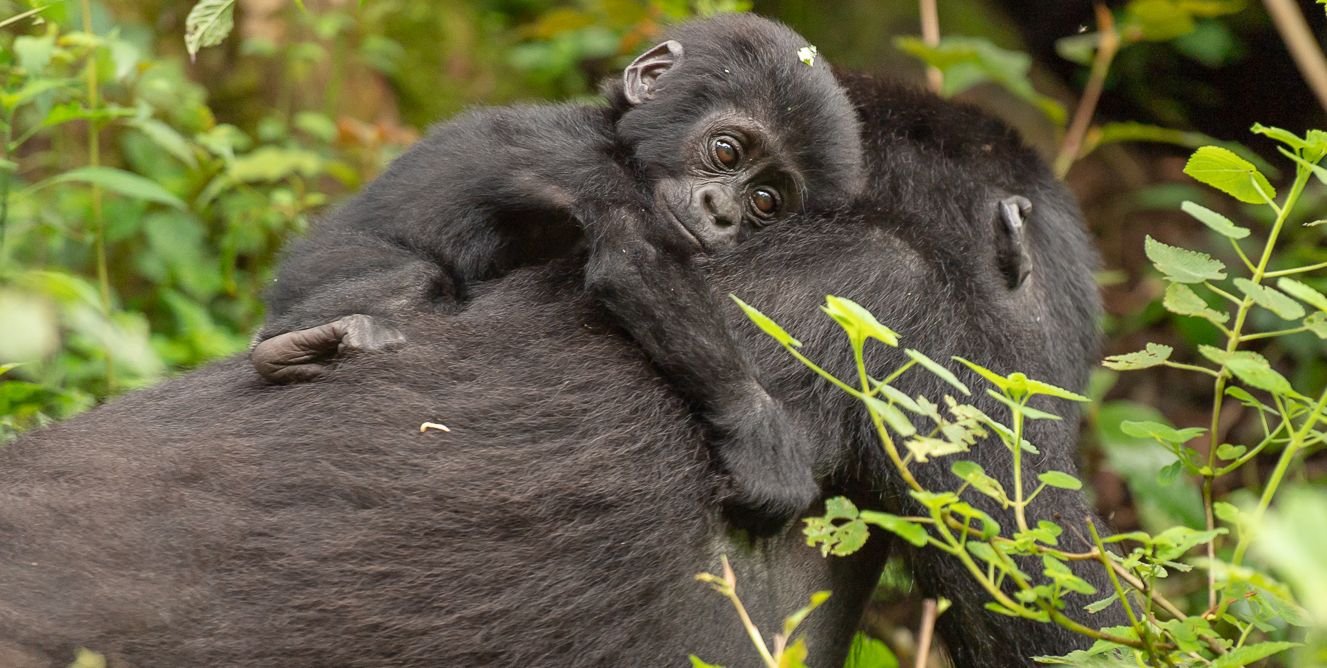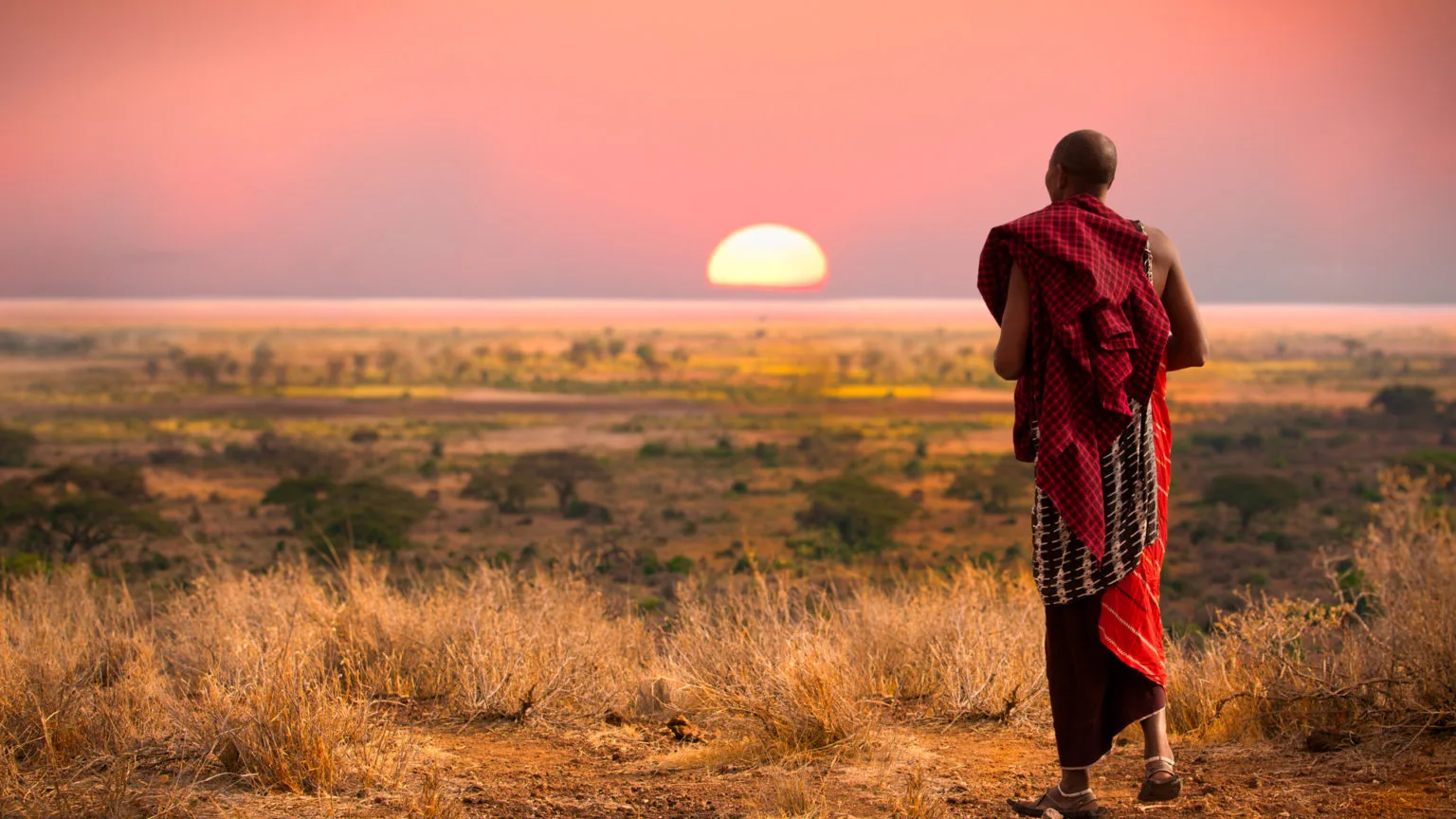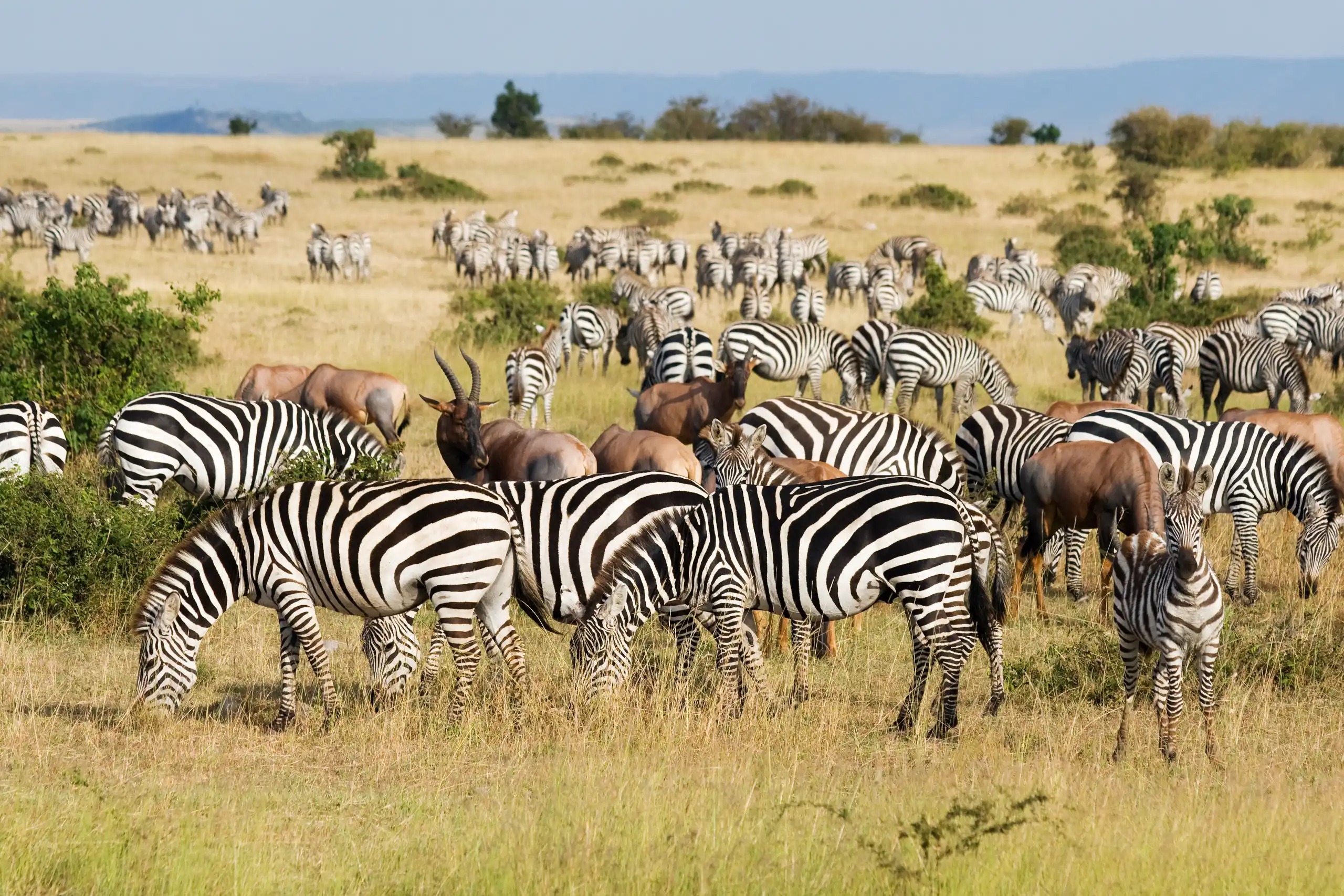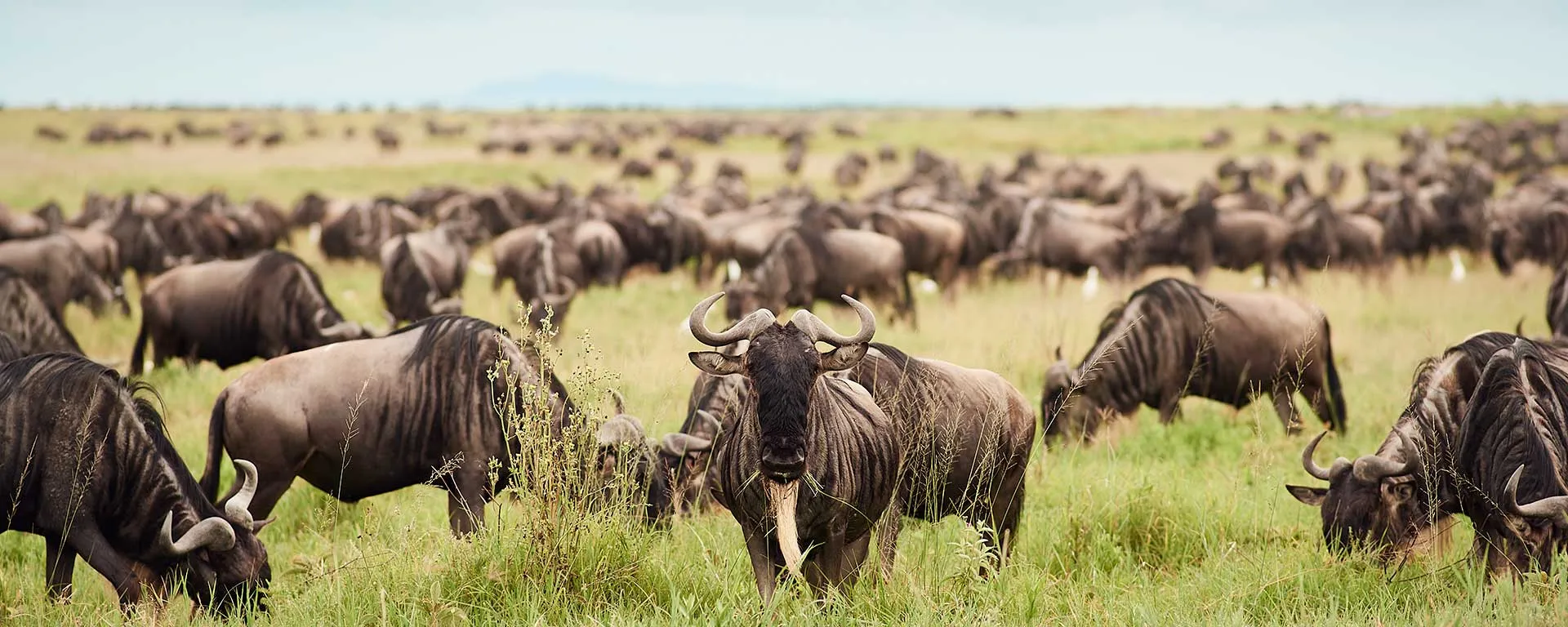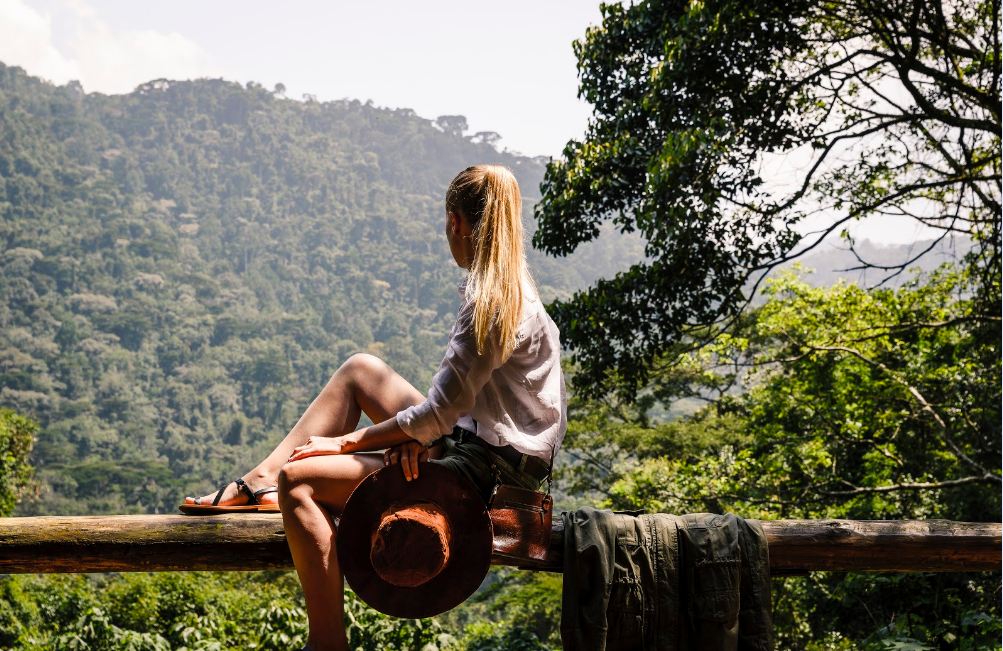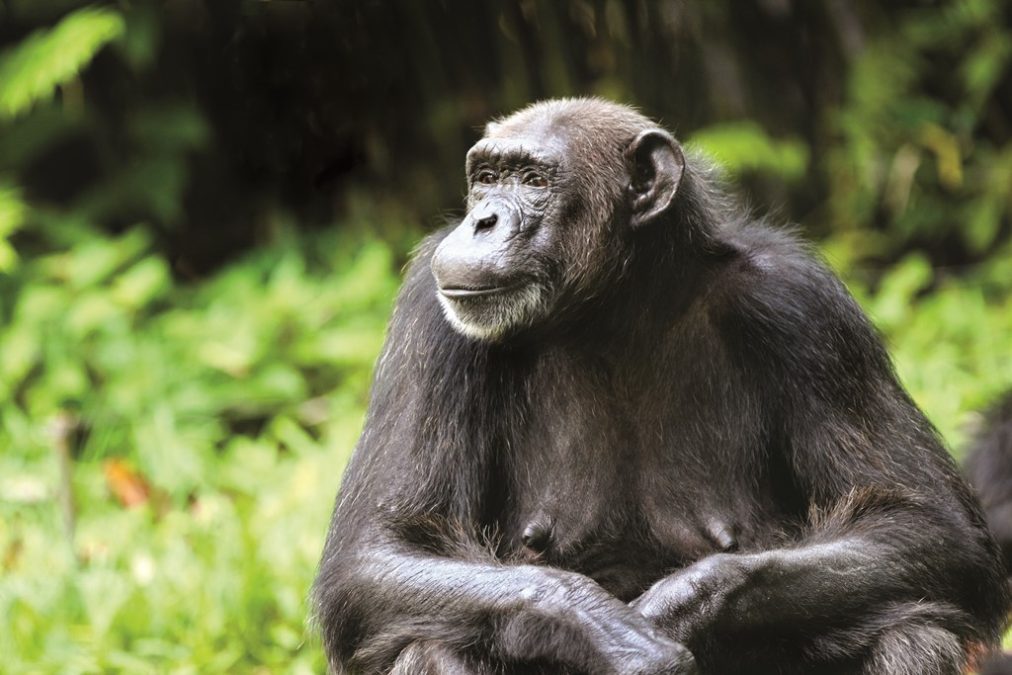Trekking gorillas in Uganda and Rwanda is one of the best things to do in Africa. It is a walking safari of a very different kind that offers you a great opportunity to see the rare Mountain Gorillas in their natural habitat.
You trek through dense tropical forest jungles that are verdant and bursting with secret sounds. While finding the gorilla families may take several hours of hiking through a dense-dark rain-forest jungle, the reward at the end is the chance to go eye-to-eye with these magnificent gentle giants, which can weigh over 200 kilograms and share about 98% of their DNA with human beings.
Habituated to your presence, the mountain gorillas may include gentle mothers, playful youngsters, and aunts and, of course, a formidable Silverback male. It really is the wildlife safari experience of a lifetime.
Below, learn more about; why go gorilla trekking in Rwanda and Uganda? Where to trek gorillas in Uganda and Rwanda? What to expect on a gorilla trek? When is the best time to go gorilla trekking?, How much is trekking gorillas in Uganda or Rwanda? How difficult is gorilla trekking? Or read some FAQs about Gorilla Trekking.
Our gorilla trekking tours
Where To See Gorillas?
There are only two populations of mountain gorillas left in the whole world.
The first lives in the volcanic Virunga Mountains of East Central Africa, with gorilla families scattered throughout Rwanda’s Volcanoes National Park, Congo’s Virunga National Park and Uganda’s Mgahinga Gorilla National Park.
The second Mountain Gorilla population lives deep in Uganda’s Bwindi Impenetrable Forest National Park. And we have a range of different trips that visit each of these unique places.
What to Expect On a Gorilla Trek?
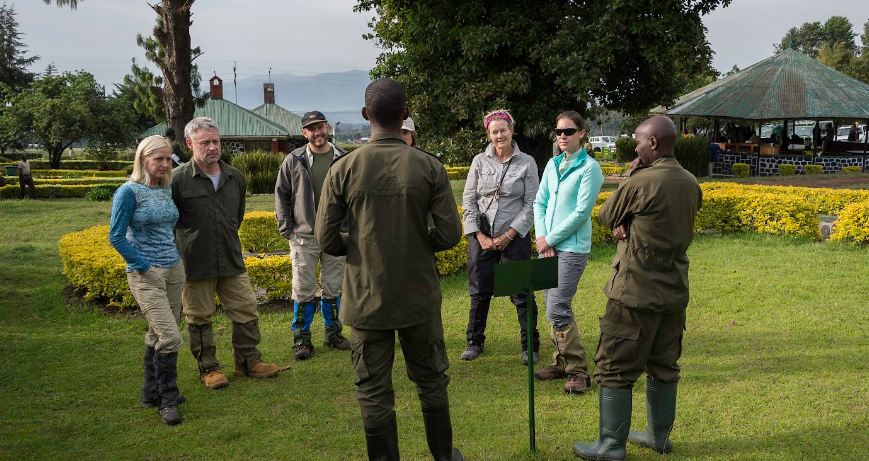
1. Pre-Gorilla Trekking Briefing
Gorilla trekking in Uganda and Rwanda starts with a briefing very early in the morning. There is a limit of one trek each day per gorilla family group.
During the briefing, guests are divided into suitable groups for trekking each gorilla family. They are also briefed on essential rules that help protect both primates and people. A maximum of 8 visitors are allowed to trek one gorilla family, at a time.
If you wish to see a specific mountain gorilla family, a nearby family or interested in a short trek, you can make a special request, although this cannot be guaranteed. Please be sure you notify your safari guide of these needs. They will liaise with park staff on your behalf.
Gorilla families in Bwindi, Volcanoes and Mgahinga Parks are territorial. And your briefing guide will discuss where each family has been roaming ‘recently’. As such hopefully, you’ll be given an estimate of how long the trek will take to find them, although this is not always the case.
2. Actual Gorilla Trek
The actual gorilla trek commences at around 8.00 am. The trekking pace is relaxed – expect frequent stops to admire the incredible views or identify a bird. But high humidity and steep hills take their toll – you should be fit enough to walk for 2-6 hours at a relaxed pace.
You’ll be accompanied by local security personnel, a ranger guide, and trackers, with optional porters – who walk with you until a gorilla family is located.
Porters are from the surrounding local communities, rotated for revenue sharing which goes directly to them. We highly recommend at least one porter each trekker. Usually, porter fees are additional to your Uganda gorilla trekking tour, and paid direct.
3. The Face To Face Encounter with the Gorillas
Once you encounter the gorillas, your ranger guides only take you closer to them. And your viewing time begins – which is a maximum of 1 hour.
The strain of early start and a relatively difficult hike (that may go for hours along slippery, twisting mud paths through stinging nettles) rapidly evaporates when you look into the liquid brown eyes of one of our closest relatives. Mesmerizing to watch, your permitted hour flies by as they carry on their daily business of eating, sleeping, preening and playing, usually paying little attention to onlookers.
Youngsters chase each other, swing in trees, laugh and squeal just like children. Mums dote on babies, suckling and cradling them, and big daddy silverback watches over them all.
Will I Definitely See The gorillas
Of course, there are no guarantees with wild animals but, you probably have a 99% chance of seeing Gorillas in Uganda and Rwanda. We haven’t ever heard of a tourist group being so unlucky as to not see gorillas on a Rwanda or Uganda gorilla trek.
Gorilla trackers head off at dawn every day to locate gorilla families and radio the co-ordinates back to headquarters. So, that means that before you even begin your trek the trackers have a good idea of where your allocated gorilla family is or will be.
How close can I get to the gorillas - Can I Touch Them?
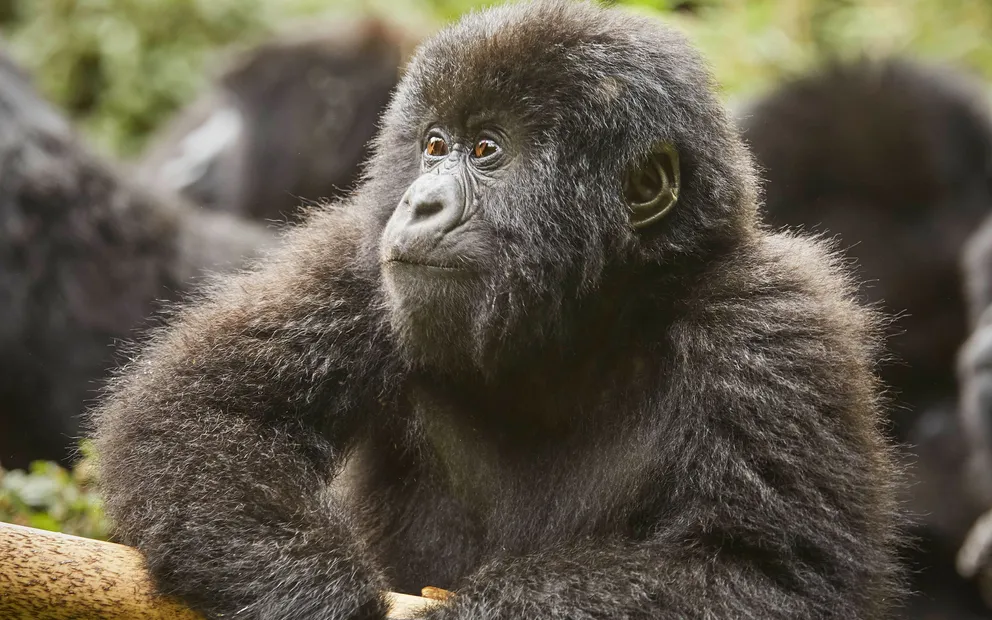
No, absolutely not. You are supposed to observe gorillas from a minimum distance of 7m. Although we understand the instinct to want to reach out and cuddle an adorable baby gorilla.
First, it is because gorillas are wild animals and thus very strong and unpredictable, you could be harshly injured.
Second, mountain gorilla populations are already under severe threat from poaching and human encroachment on their environment, plus they are highly susceptible to human diseases due to share DNA.
If you are ill, you will not be permitted to go on a gorilla trekking tour, so ensure you’re in excellent health before you travel and take precautions not to pick up a bug on the flight over.
Remember, once you find the gorillas, you are only allowed one hour with them so as not to cause them distress. This passes by in a flash, so don’t spend all your time behind a lens: put the camera down after a few minutes and just watch them, grateful that you have the rare privilege of seeing these beasts in the wild. Read more about the gorilla trekking rules.
Which Month Is Best For Trekking Gorillas?
Rwanda and Uganda share a common climate and although gorilla trekking is considered a year-round activity, the treks in the rainy season are often slightly more difficult due to the extra muddy surface in the forest. Bwindi is a rainforest, so in the dry seasons visitors should take the moist subsoil into account (don’t forget your gaiters!).
Normally the first rainy season takes place in March and April and another rainy season starts from late September to November. However, due to climate change, the rainy seasons in the last 6 years have been difficult to predict. You can assume that all months are easily accessible, but that the greatest chance of rain is in March and April.
How Difficult Is Gorilla Trekking?
As noted above, trekking gorillas in Uganda and Rwanda takes you through dense forest jungles and rugged terrain, and frequent steep slopes. Uganda’s Bwindi Impenetrable Forest is aptly named and vegetation tends to be very thick. Even the actual trails can be quite overgrown.
On top of that, the trails can be muddy or slippery especially after rain. Navigating such trails and landscape can require a good level of fitness, balance, and agility. But don’t worry, you don’t need to be able to complete a bench press 3 times your body weight to go gorilla trekking in Uganda or Rwanda! All trekkers will be divided into groups of similar age and fitness levels.
The oldest and least fit trekkers will normally be allocated the gorilla family that is nearest the starting point. And your guides are very experienced in assessing how the group is coping and will stop when necessary for a break, to drink water, admire a view or even have a snack.
Can Children Go Gorilla Trekking?
Gorilla trekking has lately become a concern for families interested in this wonderful adventure while having children that are below the age 15.
Therefore, the big questions always are; will our children be allowed to trek gorillas. To begin with, the minimum age for gorilla trekking in Uganda and Rwanda is 15 years. This age restriction is in place due to a number of important factors;
- Children might find it challenging to remain calm if a giant silverback gorilla mock charges
- Children also pose health risks during gorilla trekking
- Children’s limited stamina could make it difficult for them to complete the entire trek
- Children are also less likely to follow gorilla trekking Rules
Despite the age restrictions for gorilla trekking, it is still possible for children below 15 years to do Gorilla trekking, but only in Uganda! This is mainly because of the mountainous terrain of Volcanoes National Park which makes it very difficult for the young ones to undertake the gorilla trek because the trek is ascending right from the start.
Is Gorilla Trekking Safe?
Yes – gorilla trekking is safe both for you and this most majestic animal, so long as you follow a few basic rules and listen to your trek guide. And Uganda and Rwanda are among of the safest countries to visit in Africa (read more about how safe is Uganda and how safe is Rwanda)
The local people are warm and welcoming towards visitors. Also, gorillas are not dangerous animals, despite their size, fearsome appearance, and unfair reputation. Mountain gorillas are typically shy, gentle giants who usually spend most of their time feeding and looking after their young. They are even vegetarians (predominantly).
So, while gorillas will defend themselves if attacked, they’re not aggressive creatures. And they are not interested in hurting humans. Moreover, the gorilla families that you visit are habituated – accustomed to the presence of humans. Also, when you go on a gorilla trek in Uganda you go in the company of a trained ranger guide who is armed in case of an emergence.
So trekking gorillas in Uganda is a safe and thrilling adventure!
What Pack For Gorilla Trekking Safaris?
- Sturdy, waterproof hiking boots or shoes
- A pair of Gaiters to cover the vulnerable tops of your footwear
- Insect repellents
- Hooded, lightweight waterproof jacket or poncho
- Camera
- Nature blending color clothes such as khaki, green or light brown
- Strong gardening gloves to protect when you grab on to things as you trek
- Hiking pants or trouser
- Long sleeved shirt or blouse
- Energy snacks
- Broad-brimmed hat to protect you from strong equatorial sunshine.
- Mini first aid kit with antiseptic, plasters & moist towelettes
- Water bottle or hip flask: Be sure to keep hydrated, especially at altitude.
- A waterproof daypack
See our complete recommended packing list for gorilla trekking
Where To Stay On A Gorilla Trekking Tour?
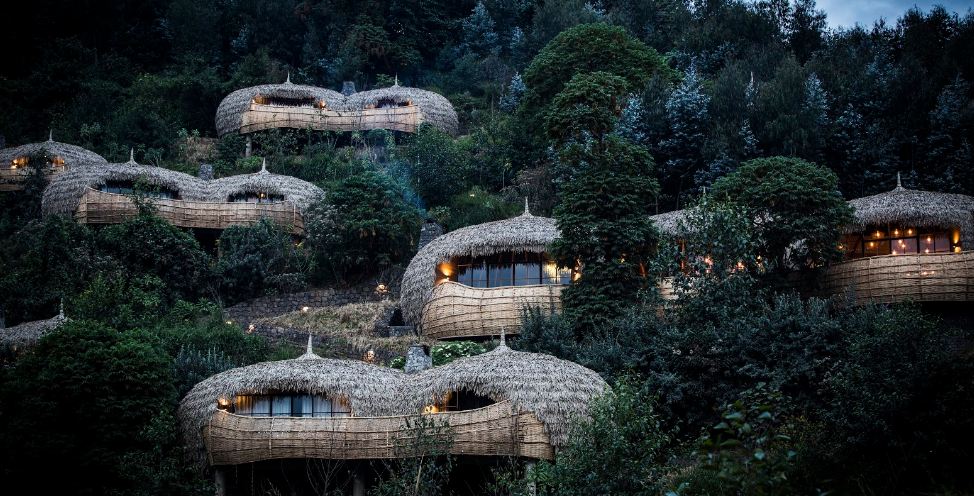
There are a variety good accommodation options for gorilla trekking in Uganda and Rwanda. Rwanda has more choice in top-end luxury lodges, while Uganda has a few more mid-range and budget options.
Several safari lodges in Uganda border the park and have a true forest feel, while in Rwanda many lodges have mountain and/or lake views, but most are a bit farther away from the forest boundry.
Cost Of Gorilla Safari Lodges
Some gorilla lodges can charge as high as USD$2500 while the budget ones can pocket as low as $50 for a double room. It is all about the facilities, location, food, services and so much more.
Best Uganda Gorilla Safari Lodges
- Gorilla Mist Camp; from $ 130 per person/night sharing
- Haven Lodge Buhoma; from $169 per person/night sharing
- Sanctuary Gorilla Forest Lodge; from $ 565 per person/night sharing
- Buhoma Lodge from $155 per person/night sharing
- Volcanoes Bwindi Lodge; from $ 710 per person/night sharing
- Mount Gahinga Lodge; from $ 710 per person/night sharing
Best Places to Stay On A Gorilla Safari in Rwanda
- Singita Kwitonda Lodge; from US $ 1240 per person/night sharing
- One&Only Gorilla’s Nest; from $ 2100 per person/night sharing
- Bisate Lodge; From 2,230 per person/night sharing
- Five Volcanoes Boutique Hotel; from $ 875 per person/night sharing
- Virunga Lodge; from $ 1030 per person/night sharing
- Sabyinyo Silverback Lodge; From $1,320 per person, per night
- Da Vinci Gorilla Lodge; from $ 180 per person per night
- Gorilla Solution Lodge; from $ 200 per person per night
How much does it cost to go gorilla trekking?
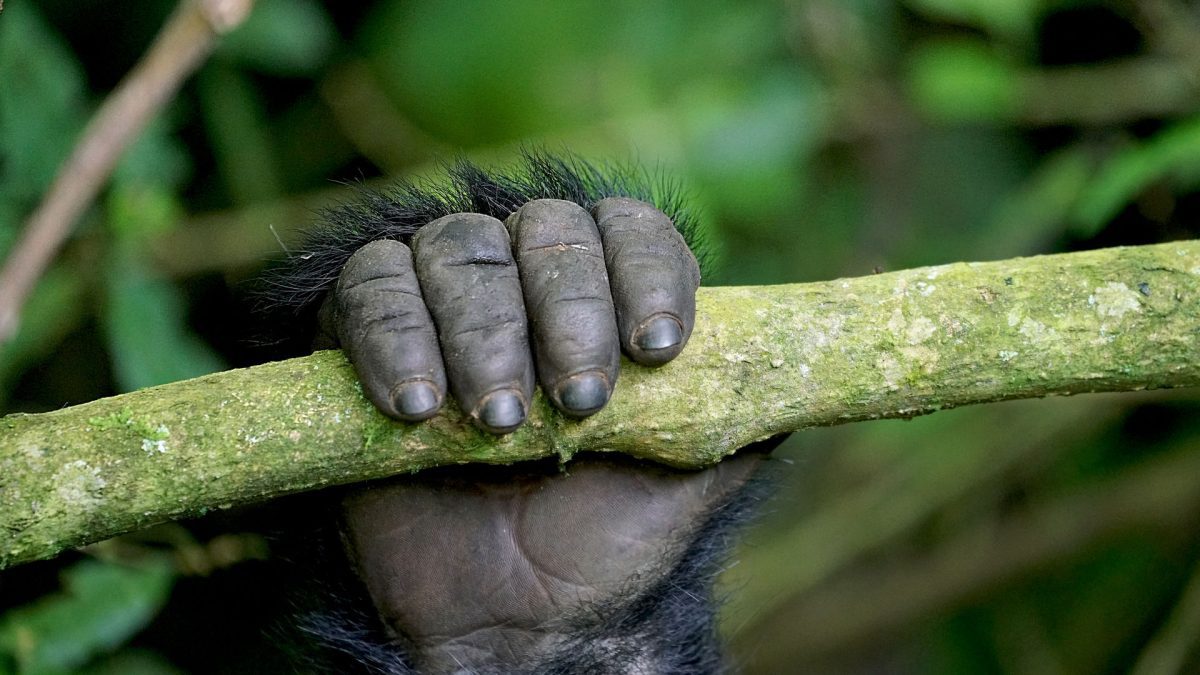
- 3 Day Gorilla Trekking Uganda Costs around $1,746
- 3 Day Rwanda Gorilla Tour Costs about $2,500
- Affordable 4 Days Uganda Gorilla and Rwanda Golden Monkey Safari cost around $1,815
- 1 Day Gorilla Trekking in Rwanda cost about $1,761
- 2 Day Gorilla Trekking in Uganda from Kigali Rwanda costs about $1,480
Of course, various safari operations offer different quotes. Roughly the cheapest gorilla safari should have a price of about $ 1200 of course depending on the number of people.
The super gorilla safari luxury can cost between $ 4000 to 6000 per person. Based on reviews of most gorilla tour operators in Uganda, most tourists prefer the mid-range safaris, not so budget, but affordable. Booking your safari during the low season should get those costs lowered!
Why Is Gorilla Trekking Expensive?
Trekking gorillas in Uganda is one of the top Africa wildlife safari experiences. Gorillas our close genetic relatives, highly endangered, and high numbers of travelers are interested in seeing them in the wild. But, due to shared DNA, our virus and illness can easily spread to them.
It is should be note that if the gorilla trekking permit cost was reduced considerably, too many tourists would be attracted to visit the gorillas hence affecting the overall well-being of the few habituated gorilla families. This has forced Uganda government to raise the gorilla trekking permit price.
Gorilla Trekking Permit Price
A Uganda gorilla trekking permit costs $ 800 and 75% of the money raised is to conserve the gorilla surviving population.
The government pockets 15% while 10% is meant for the local communities around the parks. As you purchase the Uganda gorilla permit, note that the cost includes park entrance fees, gorilla watching for an hour, advance trackers and ranger fees.
A Gorilla trekking permit in Rwanda costs $ 1500. Another reason why a gorilla trekking safari is expensive is because of other additional costs such as;
- Transport Costs
- Porter fees
- Cost of Items for packing like insect repellents, sunscreen and more.
- Visa and Border Crossing
- Tips
What is the Cheapest Way To See Gorillas?
- Book your gorilla tour during low season
- Consider budget or midrange accommodation
- Consider short gorilla safaris
- Opt for a group gorilla tour
- Avoid domestic flights in favor of road trip
- Start your Uganda gorilla trekking tour from Kigali
- Choose Uganda over Rwanda
Is It Better To See Gorillas In Uganda Or Rwanda?
The gorilla trekking process works the same in Rwanda as in Uganda. In both countries it is not possible to choose a specific gorilla family in advance, but in Uganda you can choose one of the five areas where the gorilla families are found.
On the day of the gorilla trekking, the rangers decide on site which traveler will visit which gorilla family. In both countries, visitors are allowed to spend a maximum of one hour with the gorillas.
The only major difference between the treks in both countries is the price. In Uganda, gorilla treks can be organised for a fraction of what it costs in Rwanda — making one of Africa’s greatest, and most expensive, wildlife experiences more accessible.
Questions About Gorilla Trekking?
We will happily answer all your questions about the various gorilla family groups, weight, things to pack and gorilla safari packages options!
